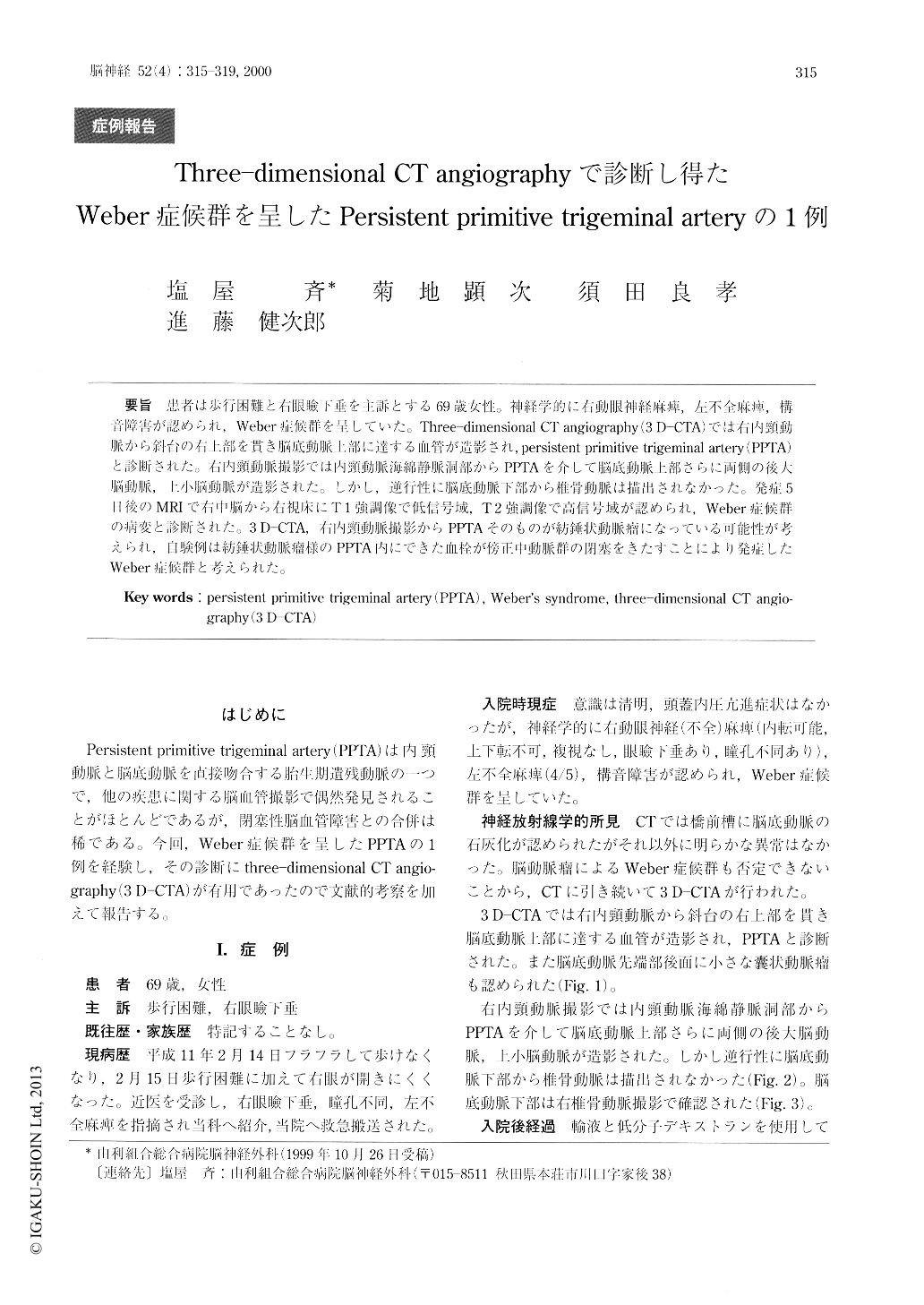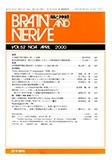Japanese
English
- 有料閲覧
- Abstract 文献概要
- 1ページ目 Look Inside
患者は歩行困難と右眼瞼下垂を主訴とする69歳女性。神経学的に右動眼神経麻痺,左不全麻痺,構音障害が認められ,Weber症候群を呈していた。Three-dimensional CT angiography(3 D-CTA)では右内頸動脈から斜台の右上部を貫き脳底動脈上部に達する血管が造影され,persistent primitive trigeminal artery(PPTA)と診断された。右内頸動脈撮影では内頸動脈海綿静脈洞部からPPTAを介して脳底動脈上部さらに両側の後大脳動脈,上小脳動脈が造影された。しかし,逆行性に脳底動脈下部から椎骨動脈は描出されなかった。発症5日後のMRIで右中脳から右視床にT1強調像で低信号域,T2強調像で高信号域が認められ,Weber症候群の病変と診断された。3D-CTA,右内頸動脈撮影からPPTAそのものが紡錘状動脈瘤になっている可能性が考えられ,自験例は紡錘状動脈瘤様のPPTA内にできた血栓が傍正中動脈群の閉塞をきたすことにより発症したWeber症候群と考えられた。
We report a rare case of persistent primitive trigeminal artery (PPTA) presenting with brain stem infarction known as Weber's syndrome, and document its unique findings of three-dimensional CT angiogra-phy (3 D-CTA).
A 69-year-old woman was admitted to our hospital because of gait disturbance and blepharoptosis on the right eye. Neurological examination on admission re-vealed the right oculomotor nerve palsy, left hemi-paresis and dysarthria, all of which indicated the signs and symptoms of Weber's syndrome.

Copyright © 2000, Igaku-Shoin Ltd. All rights reserved.


